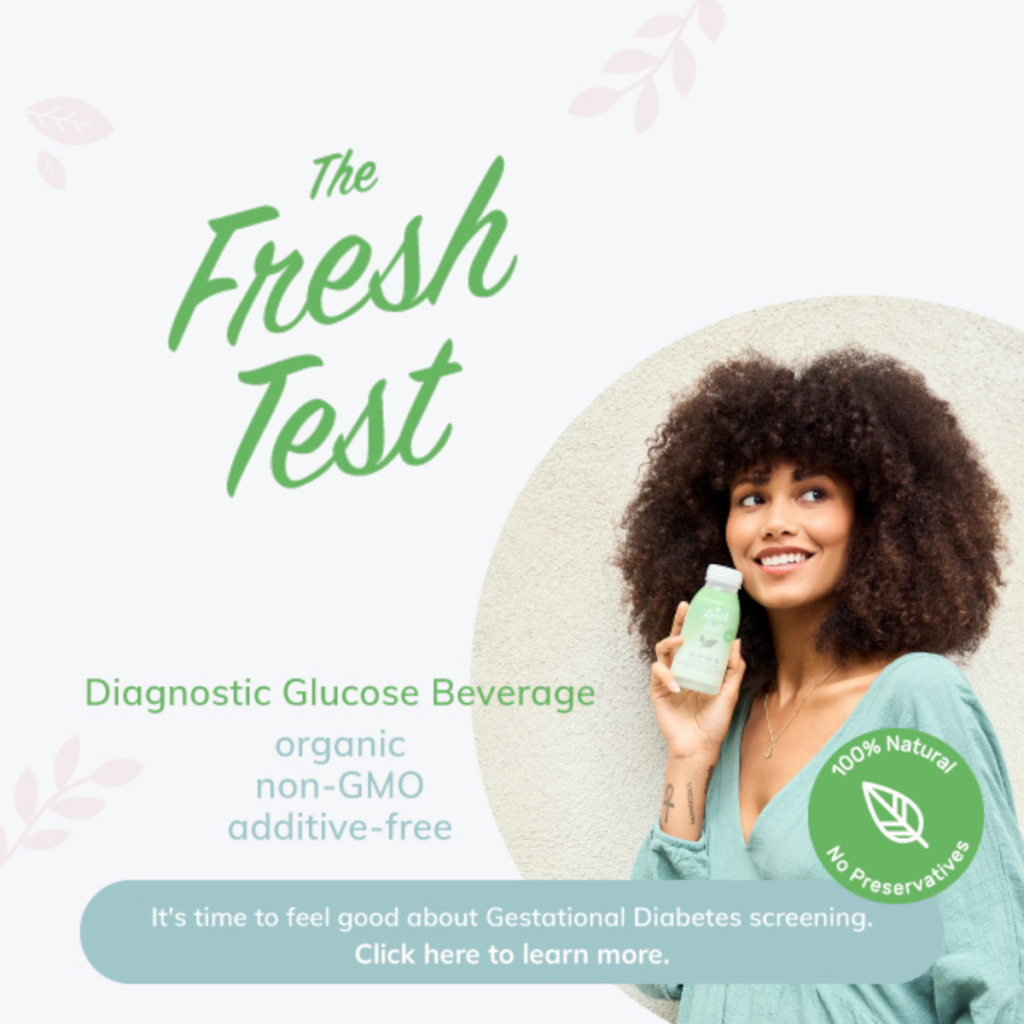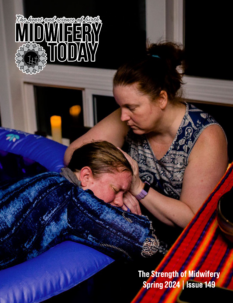
Birth in 2050
Editor’s note: This article first appeared in Midwifery Today, Issue 94, Summer 2010.
Subscribe to Midwifery Today Magazine

Jan Teaching
There was a panel at Michel Odent’s conference (that I was privileged to take part in) called, “Birth in 2050.” I will attempt to give you my ideas about birth 40 years from now. Let’s see if we can turn the tide in the next two generations so that birth trauma is mostly a thing of the past and the ones who follow us do not have to consider birth an unfulfilled human rights issue.
Taking the pessimistic view of birth in 2050, I would have to say that nearly all births will be by cesarean. But I am going to take the optimistic view of birth in 2050, because we all are working hard to change birth practices, and many people are waking up to the power birth has to transform mother and baby, family and society. There are so many of us working so hard to change the birth world that I have to believe I have dedicated my life to something that will bear fruit. Hopefully, it already has.
I have found social networking to be a very powerful tool for implementing the types of changes we will need to ensure that birth has its place in the list of human rights issues. I have found midwives and activists all over the world through sites like Facebook and Twitter. Our Midwifery Today fan page on Facebook now has more than 10,000 fans. Our marketing whiz, Donna, keeps it active by posting articles and notes. Our International Alliance of Midwives page has 4,000 fans and we encourage conversations and networking there, as well as posting articles. I have a couple thousand friends and my Twitter notes go into my Facebook page. This morning I had a lovely Facebook chat with our country contact from Nepal. She works in a rural area and wants to have a midwifery organization. She works with Safe Motherhood. This is all rather new and quite amazing. Every time I friend someone, or they friend me, I find they know hundreds of other birth doulas, midwives and activists.
Midwifery Today is doing our part in other ways, too. We do conferences two or three times per year. Please join us. Midwifery Today magazine is quarterly and is a super compilation of articles from some of the greatest birth minds around. Please subscribe. Midwifery Today E-News is free and comes out every two weeks. We also publish books for midwives, doulas and educators.
All of you, our readers, are working very diligently in your sphere of influence. Let’s ponder how we can really influence and change birth practices. There are so many of us now. Much of the evidence we need is already out there, and more is coming to light daily. We are all doing a lot with the little time we have, but what else can we do during the course of our day? I like to wear a Midwifery Today or other birth shirt and when anyone asks me, “Are you a midwife?” I have a little talk ready.
You mostly have the power to have a great birth. Prenatal care is what you do between visits to your midwife or doctor. Eat seafood and be happy! Eat from a wide variety of sources and get plenty of protein. Salt your food to taste. Guard your heart and mind. Don’t let negative birth stories enter.
Remember, everything you ingest and all tests (including ultrasound) affect you and your baby. Question everything anyone wants to do to you or your baby.
Birth is well designed by our creator to work—birth works! We have learned what holds up labor: if it’s not a physiological problem, it is psychological. Cultural influences, like the television show, “A Baby Story,” have a huge impact on a woman’s mind-set. We are inundated with bad images and stories. This means we midwives and doctors must work hard against these old belief systems. Ina May Gaskin tells pregnant women, “No bad birth stories.” If someone tries to tell you one, let them know you are pregnant and are not to be polluted by a bad birth story.
People learn about birth beginning when they are young, and images are formed. We need to constantly teach how birth is supposed to work, beginning when our children are very young. What are the best ways to approach this? Young women have babies. We need to influence them before they have made up their minds to go for interventive practices or, worse yet, not made up their minds but just floated into the mainstream’s version of birth. Remember what is at stake here: our future, the future of our children and grandchildren and, indeed, the future of our world.
Okay everyone, we have 40 years. Let’s make a plan and carry it out. Robbie Davis-Floyd says that if we can hit critical mass, it will get done. Critical mass means that 20% of the people understand that birth matters and influence the people in their sphere of influence, who pass the information to their social network, and so on.
We need to plan to change the direction faster if we only have 40 years. Let’s tell good baby stories. Media is changing and it is in the hands of everyone with a camera. Your video can be put on YouTube, where it will likely help influence the younger generations. We are holding a short video contest to encourage people’s creativity in movie-making to change birth. The deadline is August 10, 2010. Read about the contest here: midwiferytoday.com/conferences/contest
Let’s all do everything we can to make every birth as beautiful as God designed it to be.
Sitting at my desk in the Midwifery Today office, I am inundated with articles from all over the world—from Belize, Mexico, Canada, Brazil and France and other countries—and all say how awful and mostly dangerous hospital practices are in their part of the world. These are horrendous birth stories, but often the same writer learned and followed up with a great birth—most after they found a caring midwife. Many of these writers became midwives or doulas themselves to change birth or at least to make it better for one motherbaby, one birth at a time.
These issues remind me of the story of the little girl and the starfish: The little girl was walking along a beach strewn with thousands of starfish. She was throwing starfish that had washed ashore back into the ocean, saving their lives. A man came along and asked her, “What does it matter? You cannot save all of these starfish.” The little girl held up a starfish, said, “It matters for this one,” and threw it back into the ocean. With all of us working, one motherbaby at a time, we can do it. Birth in 2050 will be a miraculous passage—just as it was meant to be!

 Jan Tritten is the founder, editor, and mother of Midwifery Today magazine and conferences. Her love for and study of midwifery sprang from the beautiful homebirth of her second daughter—after a disappointing, medicalized first birth in the hospital. After giving birth at home, she kept studying birth books because, “she thought there was something more here.” She became a homebirth midwife in 1977 and continued helping moms who wanted a better birth experience. Jan started Midwifery Today in 1986 to spread the good word about midwifery care, using her experience to guide editorial and conferences. Her mission is to make loving midwifery care the norm for birthing women and their babies in the United States and around the world. Meet Jan at our
Jan Tritten is the founder, editor, and mother of Midwifery Today magazine and conferences. Her love for and study of midwifery sprang from the beautiful homebirth of her second daughter—after a disappointing, medicalized first birth in the hospital. After giving birth at home, she kept studying birth books because, “she thought there was something more here.” She became a homebirth midwife in 1977 and continued helping moms who wanted a better birth experience. Jan started Midwifery Today in 1986 to spread the good word about midwifery care, using her experience to guide editorial and conferences. Her mission is to make loving midwifery care the norm for birthing women and their babies in the United States and around the world. Meet Jan at our 
















